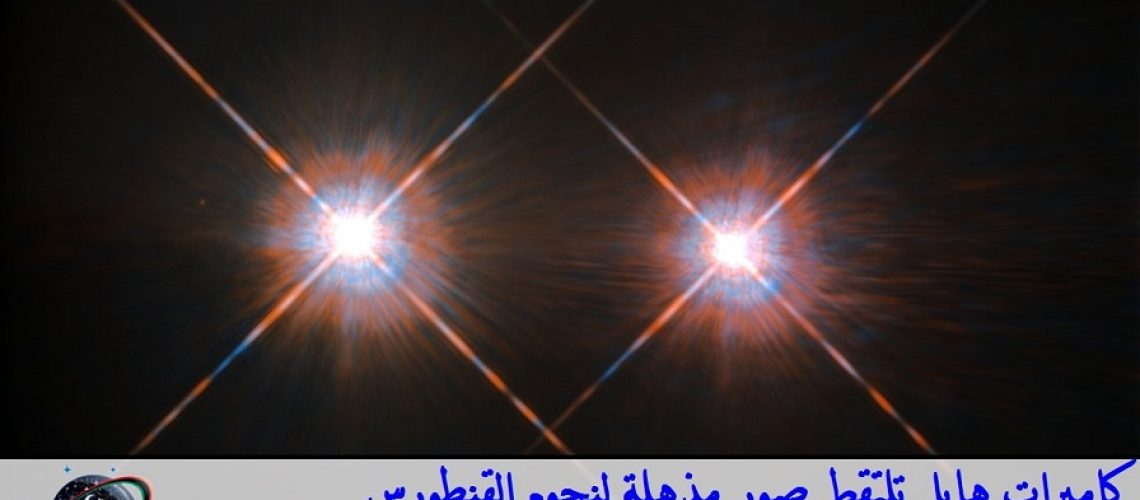صورة تُظـهر أقـرب نظام شمسي إلـى الأرض، النظـام الشمسي ألفـا قنطورس- Alpha Centauri group- الذي يقـع في كوكبة قنطـورس-constellation of Centaurus- علـى مسـافة 4.3 سنـة ضوئية، ويتكون هـذا النِظام مِن ثُنائي يتكون من ألفا قنطورس A والـذي يقع يـسار الصورة، والـفا قنطـورس B الذي يقع على يمـين الصورة، بالإضافة إلى قزم أحمـر خافت غير واضح فـي الصـورة والـذي يُسمى الـفا قنطورس C ويسمى أيضاً بـ ” بوركسيما سنتوري-Proxima Centauri-
أُلتقطت الصورة بواسطة كاميرا هـابل واسعة الـنطاق -wide field-.
مـقارنة بالشمـس، ألفا قنطورس A من نفس نوع الشمس- G2 – ولكنه أكبر قليلاً منها بينما ألفـا قنطورس B من نوع -K1- وأصغر قليلاً من الـشمس، ويدوران حول بعضِهما البعض في مركز مُشترك مرة كـل 80 سنة، والمسافة بينهما لاتقل عن 11 ضعف المسـافة بيـن الأرض والشمس.
ولأنّ تـِلك النجوم الأقـرب إلـى الأرض فهـي مِن بيـن النجـوم الأكثر دِراسة من قبل عُلماء الفلك، وهي أيضاً من الأهداف الرئيسية في البحـث عن الكواكب الخـارجية الصـالحة للـسكن، وبإستخدام الجهاز “هـاربس-HARPS” التـابع لِوكالة الفضـاء الأوربية أكتشف العلماء بالفعـل كوكب يدور حول الفـا قنطورس B، ثـم في 24 اغسطس من العام الجاري أكتشفو كـوكب بِحجم الأرض تقريباً يدور حول النجم C “بورسكيمـا سنتوري”.
المصدر: وكالة الفضاء ناسا
ترجمة: Huissen Alkrimi

